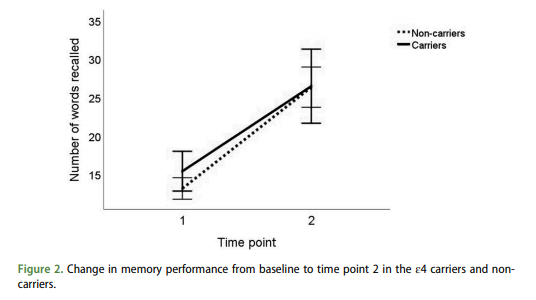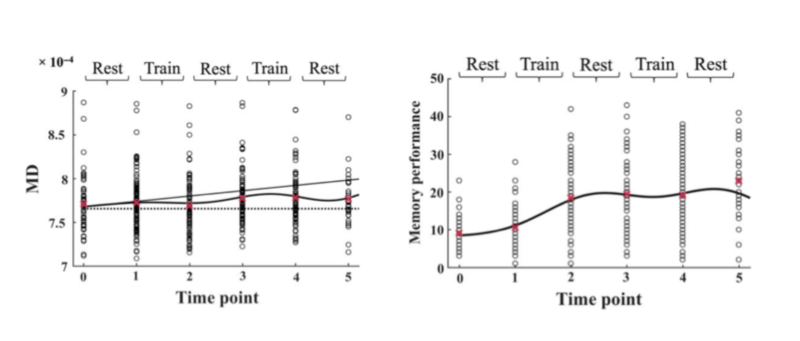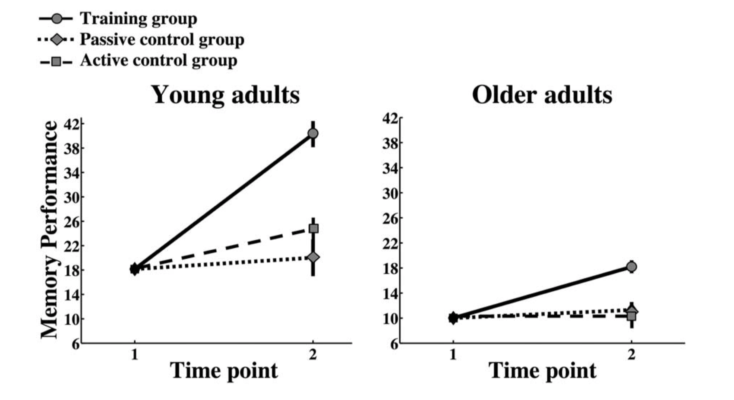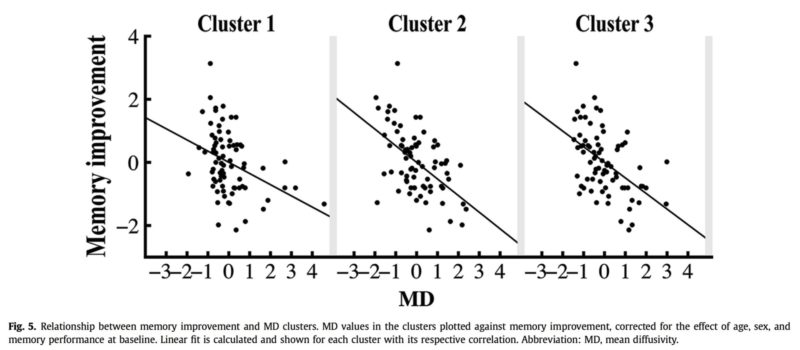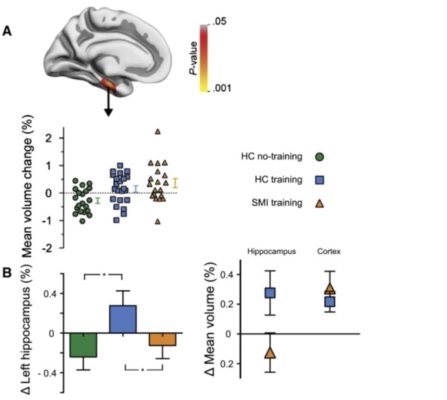Anne Cecilie Sjøli Bråthen
Post Doctoral Research Fellow
Interests
- Neurocognitive plasticity and cognitive training interventions
- Lifespan changes in brain and cognition
- Twin research
- Structural and functional MRI
- Virtual reality
- Clinical neuropsychology
Background
2012 Psychologist, UMA, Spain
Contact
Visiting address:
Harald Schjelderups hus
Forskningsveien
0373 Oslo
Postal address:
P.O. box 1094
Blindern
0317 Oslo
Project involvement
Comparative morphology of the corpus callosum across the adult lifespan in chimpanzees (Pan troglodytes) and humans.
3. November 2022/by Barbara FriedmanGenetic risk for Alzheimer disease predicts hippocampal volume through the human lifespan.
3. November 2022/by Barbara FriedmanWithin-session verbal learning slope is predictive of lifespan delayed recall, hippocampal volume, and memory training benefit, and is heritable.
3. November 2022/by Barbara FriedmanMethylphenidate effects on cortical thickness in children and adults with attention-deficit/hyperactivity disorder: A randomized clinical trial
3. November 2022/by Barbara FriedmanThe Functional Foundations of Episodic Memory Remain Stable Throughout the Lifespan.
3. November 2022/by Barbara FriedmanCellular correlates of cortical thinning throughout the lifespan.
3. November 2022/by Barbara FriedmanForecasting memory function in aging: pattern-completion ability and hippocampal activity relate to visuospatial functioning over 25 years.
3. November 2022/by Barbara FriedmanLevel of body fat relates to memory decline and interacts with age in its association with hippocampal and subcortical atrophy.
3. November 2022/by Barbara FriedmanThe Global Brain Health Survey: Development of a multi-language survey of public views on brain health.
3. November 2022/by Barbara FriedmanAnterior and posterior hippocampus macro‐ and microstructure across the lifespan in relation to memory—A longitudinal study.
3. November 2022/by Barbara FriedmanBiomarker Profiling Beyond Amyloid and Tau: Cerebrospinal Fluid Markers, Hippocampal Atrophy, and Memory Change in Cognitively Unimpaired Older Adults.
3. November 2022/by Barbara FriedmanLongitudinal association between hippocampus atrophy and episodic‐memory decline in non‐demented APOE ε4 carriers.
3. November 2022/by Barbara FriedmanPoor Self-Reported Sleep is Related to Regional Cortical Thinning in Aging but not Memory Decline-Results From the Lifebrain Consortium.
3. November 2022/by Barbara FriedmanSelf-reported sleep problems are related to amyloid deposition in cortical regions with high HOMER1 gene expression
3. November 2022/by Barbara FriedmanLifespan trajectories of relative corpus callosum thickness: Regional differences and cognitive relevance.
3. November 2022/by Barbara FriedmanElectrophysiological and behavioral indices of cognitive conflict processing across adolescence.
3. November 2022/by Barbara FriedmanAssociations of circulating C-reactive proteins, APOE ε4, and brain markers for Alzheimer’s disease in healthy samples across the lifespan.
3. November 2022/by Barbara FriedmanEducation and income show heterogeneous relationships to lifespan brain and cognitive differences across European and US cohorts
3. November 2022/by Barbara FriedmanIndividual variations in ‘brain age’ relate to early-life factors more than to longitudinal brain change.
3. November 2022/by Barbara FriedmanReliability and sensitivity of two whole-brain segmentation approaches included in FreeSurfer – ASEG and SAMSEG.
3. November 2022/by Barbara FriedmanEducational attainment does not influence brain aging.
3. November 2022/by Barbara FriedmanReduced Hippocampal-Striatal Interactions during Formation of Durable Episodic Memories in Aging.
3. November 2022/by Barbara FriedmanCognitive reappraisal and expressive suppression relate differentially to longitudinal structural brain development across adolescence.
3. November 2022/by Barbara FriedmanDevelopment of attention networks from childhood to young adulthood: A study of performance, intraindividual variability and cortical thickness
3. November 2022/by Barbara FriedmanBrain aging differs with cognitive ability regardless of education
3. November 2022/by Barbara FriedmanRelationship between cerebrospinal fluid neurodegeneration biomarkers and temporal brain atrophy in cognitively healthy older adults.
3. November 2022/by Barbara FriedmanNo Association Between Loneliness, Episodic Memory and Hippocampal Volume Change in Young and Healthy Older Adults: A Longitudinal European Multicenter Study
3. November 2022/by Barbara FriedmanIndividual differences in brain aging: Heterogeneity in cortico-hippocampal but not caudate atrophy rates
3. November 2022/by Barbara FriedmanGlobal Brain Health Survey raw data
3. November 2022/by Barbara FriedmanPublic perceptions of brain health: an international, online cross-sectional survey
3. November 2022/by Barbara FriedmanRelationships between apparent cortical thickness and working memory across the lifespan – Effects of genetics and socioeconomic status
5. October 2022/by Barbara FriedmanSelf-Reported Sleep Relates to Microstructural Hippocampal Decline in β-Amyloid Positive Adults Beyond Genetic Risk
5. October 2022/by Barbara FriedmanSustained upregulation of widespread hippocampal–neocortical coupling following memory encoding
5. October 2022/by Barbara FriedmanAssociations of depression and regional brain structure across the adult lifespan: pooled analyses of six population-based and two clinical cohort studies in the European Lifebrain consortium
5. October 2022/by Barbara FriedmanThe genetic organization of longitudinal subcortical volumetric change is stable throughout the lifespan
5. October 2022/by Barbara FriedmanWhole-brain connectivity during encoding: age-related differences and associations with cognitive and brain structural decline
5. October 2022/by Barbara FriedmanCognitive and hippocampal changes weeks and years after memory training
5. October 2022/by Barbara FriedmanRisk- and protective factors for memory plasticity in aging
5. July 2021/by Martine HerudA recipe for accurate estimation of lifespan brain trajectories, distinguishing longitudinal and cohort effects
5. July 2021/by Martine HerudMeta-analysis of generalized additive models in neuroimaging studies
5. July 2021/by Martine HerudMeta-analysis of generalized additive models in neuroimaging studies
14. April 2021/by Martine HerudAsymmetric thinning of the cerebral cortex across the adult lifespan is accelerated in Alzheimer’s Disease
14. April 2021/by Martine HerudSleep Efficiency Relates to Hippocampal Integrity Decline in β-Amyloid Positive Adults
14. April 2021/by Martine HerudHierarchical modulation of auditory prediction error signaling is independent of attention
12. August 2019/by Martine HerudCéline S. Reinbold, Ph.D.
High Dimensional Regression with Measurement Error
20. May 2019/by Martine HerudA primer on dichotic listening as a paradigm for the assessment of hemispheric asymmetry
10. April 2019/by James M RoeSet to change
Parallel but independent reduction of emotional awareness and corpus callosum connectivity in older age
25. January 2019/by Martine HerudMari Arnesen, Research Assistant
High-Expanding Regions in Primate Cortical Brain
25. October 2018/by Martine HerudMaintained Frontal Activity Underlies High Memory Function Over 8 Years in Aging
28. August 2018/by Hedda NessThe Lifespan Trajectory of the Encoding-Retrieval flip. A Multi-modal Examination of Medial Parietal Cortex Contributions to Episodic Memory
24. August 2018/by Hedda NessForgetfulness is not an inevitable part of getting older
18. May 2018/by Hedda NessDevelopment of white matter microstructure in relation to verbal and visuospatial working memory – A longitudinal study
4. May 2018/by Hedda NessMother-Child Prospective Study
The Temporal Dynamics of Brain Plasticity in Aging
21. March 2018/by Hedda NessSilje Forsland, Coordinator
Lifebrain at the annual light night event at the Botanical Gardens
20. February 2018/by Hedda NessBrain research: Television broadcast with Stine K. Krogsrud and Dani Beck
20. February 2018/by Hedda NessIncreased MMN amplitude following passive perceptual learning with LTP-like rapid stimulation
14. February 2018/by Athanasia M. MowinckelMeasuring ear preferences in speech perception – A new review paper
24. January 2018/by Athanasia M. MowinckelHow to get a left-ear advantage: A technical review of assessing brain asymmetry with dichotic listening
22. January 2018/by Athanasia M. MowinckelHealthy Ageing and Alzheimer’s
Novel Biomarkers for Alzheimer’s Disease
Neurocognitive Development
Neurocognitive Plasticity
Age Consolidate
Callosotomy affects performance IQ: A meta-analysis of individual participant data
22. November 2017/by Athanasia M. MowinckelHealthy minds from 0–100 years: Optimising the use of European brain imaging cohorts (“Lifebrain”)
5. October 2017/by Athanasia M. MowinckelBiological Predictors for Memory
Inflammation, Amyloid and Atrophy in The Aging Brain
Constructive memory
Aging Starts in the Womb
Lifebrain
Barbara B. Friedman, Administrative leader
Neural correlates of durable memories across the adult lifespan: brain activity at encoding and retrieval
18. August 2017/by James M RoeThe corpus callosum as anatomical marker of intelligence? A critical examination in a large-scale developmental study
11. August 2017/by James M RoeThe effects of memory training on behavioral and microstructural plasticity in young and older adults
7. August 2017/by James M RoePoor sleep quality and Alzheimer’s biomarkers
1. July 2017/by James M RoeNeuroinflammation and tau interact with amyloid in predicting sleep problems in aging independently of atrophy
26. June 2017/by James M RoeInflammation, amyloid and atrophy in the aging brain: relationships with longitudinal changes in cognition
10. May 2017/by Athanasia M. MowinckelThe Disconnected Brain and Executive Function Decline in Aging
1. March 2017/by James M RoeRelationship between structural and functional connectivity change across the adult lifespan: A longitudinal investigation
22. September 2016/by Athanasia M. MowinckelAthanasia Monika Mowinckel, Researcher
Changes in white matter microstructure in the developing brain-a longitudinal diffusion tensor imaging study of children from 4 to 11 years of age
12. September 2016/by Athanasia M. MowinckelEarly life affects how we age – new PNAS paper
29. August 2016/by James M RoeMemory training: White matters
22. August 2016/by James M RoeLine Folvik, PhD
Hedda Ness, Postdoctoral Fellow
Neurodevelopmental origins of lifespan changes in brain and cognition
18. July 2016/by Athanasia M. MowinckelWhite-matter integrity as a marker for cognitive plasticity in ageing
15. July 2016/by Athanasia M. MowinckelGetting connected
15. July 2016/by James M RoeBehavior and Attention Problems in Eight-Year-Old Children with Prenatal Opiate and Poly-Substance Exposure: A Longitudinal Study
23. June 2016/by James M RoeSelective increase in posterior corpus callosum thickness between the age of 4 and 11 years
7. June 2016/by Athanasia M. MowinckelStaying connected
23. May 2016/by James M RoeThrough thick and thin: cortical development
7. February 2016/by James M RoeThrough Thick and Thin: a Need to Reconcile Contradictory Results on Trajectories in Human Cortical Development
11. January 2016/by Athanasia M. MowinckelWhat determines brain plasticity?
9. November 2015/by James M RoeWhat determines brain plasticity?
9. November 2015/by James M RoeBareclona retreat!
28. October 2015/by James M RoeCognitive function of youths born to mothers with opioid and poly-substance abuse problems during pregnancy
16. October 2015/by Athanasia M. MowinckelGenetic influence on lifespan brain development – new PNAS paper
13. October 2015/by James M RoeGenetic influence on lifespan brain development – new PNAS paper
13. October 2015/by James M RoeDevelopment and aging of cortical thickness correspond to genetic organization patterns
29. September 2015/by Athanasia M. MowinckelBrain development from cradle to grave: Radio interview with Kristine Walhovd
18. September 2015/by Athanasia M. MowinckelDevelopment of white matter tracts in children
14. September 2015/by James M RoeKristine Walhovd and Anders Fjell awarded Research Prize 2015
4. September 2015/by James M RoeNamed as a World-class research group
26. August 2015/by James M RoeMemory, aging, and the brain at rest
25. August 2015/by James M RoeFunctional connectivity change across multiple cortical networks relates to episodic memory changes in aging
24. August 2015/by Athanasia M. MowinckelHigh-expanding cortical regions in human development and evolution are related to higher intellectual abilities
10. August 2015/by Athanasia M. MowinckelNeurocognitive outcome in very long-term survivors of childhood acute lymphoblastic leukemia after treatment with chemotherapy only
8. July 2015/by Athanasia M. MowinckelRené Westerhausen, Prof.
Christian Krog Tamnes, Ph.D.
Egil Nygaard, Assoc. Prof.
Markus Handal Sneve, Senior Engineer
Didac Vidal Pineiro, Researcher
Håkon Grydeland, Researcher
Anne Cecilie Sjøli Bråthen, Postdoctoral Fellow
Inge Amlien, Senior engineer
Stine Kleppe Krogsrud, Post Doctoral Fellow
Lia Ferschmann, M. Phil.
Knut Øverbye, postdoctoral fellow
James Michael Roe, postdoctoral fellow
Beate Duus Wetteland
Kristine B. Walhovd, Professor
Anders M Fjell, Professor
Early Biomedical Risks
Keeping your brain in shape
17. June 2015/by Athanasia M. MowinckelHemispheric asymmetry
Longitudinal cognitive development of children born to mothers with opioid and polysubstance use.
10. June 2015/by Athanasia M. MowinckelBrain events underlying episodic memory changes in aging: A longitudinal investigation of structural and functional connectivity
19. May 2015/by Athanasia M. MowinckelThe teenage brain
4. May 2015/by Athanasia M. MowinckelPremises of plasticity—And the loneliness of the medial temporal lobe
1. May 2015/by Athanasia M. MowinckelIntracortical Posterior Cingulate Myelin Content Relates to Error Processing – Results From T1- and T2-weighted MRI Myelin Mapping and Electrophysiology in Healthy Adults
2. April 2015/by Athanasia M. MowinckelMechanisms underlying encoding of short-lived versus durable episodic memories
1. April 2015/by Athanasia M. MowinckelCortical surface area and thickness in adult survivors of pediatric acute lymphoblastic leukemia
18. January 2015/by Athanasia M. MowinckelA common brain network links development, aging, and vulnerability to disease
9. December 2014/by Athanasia M. MowinckelChild Neuroanatomical, Neurocognitive, and Visual Acuity Outcomes With Maternal Opioid and Polysubstance Detoxification
18. November 2014/by Athanasia M. MowinckelEnhanced Nutrient Supply to Very Low Birth Weight Infants is Associated with Improved White Matter Maturation and Head Growth
14. November 2014/by Athanasia M. MowinckelAccelerated changes in white matter microstructure during aging: A longitudinal diffusion tensor imaging study
12. November 2014/by Athanasia M. MowinckelNo, your child will not get so-called “digital dementia”
29. October 2014/by Athanasia M. MowinckelDevelopment of children born to mothers with mental health problems: subcortical volumes and cognitive performance at 4½ years
11. October 2014/by Athanasia M. MowinckelOrganizing principles of human cortical development – thickness and area from four to thirty years: Insights from comparative primate neuroanatomy
21. September 2014/by Athanasia M. MowinckelPoor Sleep Quality is Associated With Increased Cortical Atrophy in Community-Dwelling Adults
9. September 2014/by Athanasia M. MowinckelPoor sleep quality links with cortical thinning
9. September 2014/by Athanasia M. MowinckelKristine Walhovd & Anders Fjell
30. August 2014/by Athanasia M. MowinckelDevelopment of hippocampal subfield volumes from 4 to 22 years
30. June 2014/by Athanasia M. MowinckelCortical thickness and surface area relate to specific symptoms in early relapsing−remitting multiple sclerosis
25. June 2014/by Athanasia M. MowinckelBridging the gap between clinical neuroscience and cognitive rehabilitation: The role of cognitive training, models of neuroplasticity and advanced neuroimaging in future brain injury rehabilitation
1. June 2014/by Athanasia M. MowinckelRegional hippocampal volumes and development predict learning and memory
27. May 2014/by Athanasia M. MowinckelDifferential longitudinal changes in cortical thickness, surface area and volume across the adult lifespan: Regions of accelerating and decelerating change
8. May 2014/by Athanasia M. MowinckelCognitive decline and brain pathology in aging – need for a dimensional, lifespan and systems vulnerability view
15. April 2014/by Athanasia M. MowinckelBrain structural maturation and the foundations of cognitive behavioral development
1. April 2014/by Athanasia M. MowinckelThe roots of Alzheimer’s Disease: Are high-expanding cortical areas preferentially targeted?
21. March 2014/by Athanasia M. MowinckelLong-chain polyunsaturated fatty acids and cognition in VLBW infants at 8 years: An RCT
3. March 2014/by Athanasia M. MowinckelEffects of Cognitive Training on Gray Matter Volumes in Memory Clinic Patients with Subjective Memory Impairment
19. February 2014/by Athanasia M. MowinckelWhat is normal in normal aging? Effects of aging, amyloid and Alzheimer’s disease on the cerebral cortex and the hippocampus
16. February 2014/by Athanasia M. MowinckelMaturation of cortico-subcortical structural networks – Segregation and overlap of medial temporal and fronto-striatal systems in development
15. January 2014/by Athanasia M. MowinckelWhite matter reveals the brain’s age
9. January 2014/by Athanasia M. MowinckelDiffusion tensor imaging of white matter degeneration in Alzheimer’s disease and mild cognitive impairment
1. January 2014/by Athanasia M. MowinckelAccelerating cortical thinning: Unique to dementia or universal in aging?
12. December 2013/by Athanasia M. MowinckelThe cerebral cortex thins with age
9. December 2013/by Athanasia M. MowinckelBlood markers of fatty acids and vitamin D, cardiovascular measures, body mass index, and physical activity relate to longitudinal cortical thinning in normal aging
21. November 2013/by Athanasia M. MowinckelIntracortical Myelin Links with Performance Variability across the Human Lifespan: Results from T1-and T2-Weighted MRI Myelin Mapping and Diffusion Tensor Imaging
20. November 2013/by Athanasia M. MowinckelMotivation strengthens memory
27. August 2013/by Athanasia M. MowinckelReduced Neuroanatomic Volumes in Long-Term Survivors of Childhood Acute Lymphoblastic Leukemia
10. June 2013/by Athanasia M. MowinckelBrain Changes in Older Adults at Very Low Risk for Alzheimer’s Disease.
8. May 2013/by Athanasia M. MowinckelPerformance monitoring in children and adolescents: A review of developmental changes in the error-related negativity and brain maturation
3. May 2013/by Athanasia M. MowinckelCritical ages in the life course of the adult brain: nonlinear subcortical aging
2. May 2013/by Athanasia M. MowinckelBrain aging in humans, chimpanzees (Pan troglodytes), and rhesus macaques (Macaca mulatta): magnetic resonance imaging studies of macro- and microstructural changes
24. April 2013/by Athanasia M. MowinckelAims to predict Alzheimer’s disease 10 years before onset
22. April 2013/by Athanasia M. MowinckelThe self-regulating developing brain
12. April 2013/by Athanasia M. MowinckelLongitudinal Working Memory Development Is Related to Structural Maturation of Frontal and Parietal Cortices
18. March 2013/by Athanasia M. MowinckelMild cognitive impairment: cerebrospinal fluid tau biomarker pathologic levels and longitudinal changes in white matter integrity
1. January 2013/by Athanasia M. MowinckelDeveloping mental time travel
28. December 2012/by Athanasia M. MowinckelBrain development and aging: Overlapping and unique patterns of change
12. December 2012/by Athanasia M. MowinckelAccelerating cortical thinning: Unique to dementia or universal in aging?
12. December 2012/by Athanasia M. MowinckelLong-term influence of normal variation in neonatal characteristics on human brain development
4. December 2012/by Athanasia M. MowinckelMultimodal imaging of the self-regulating developing brain
27. November 2012/by Athanasia M. MowinckelMental time travel and default-mode network functional connectivity in the developing brain
16. October 2012/by Athanasia M. MowinckelBenefits of multi-modal fusion analysis on a large-scale dataset: Life-span patterns of inter-subject variability in cortical morphometry and white matter microstructure
15. October 2012/by Athanasia M. MowinckelNeuronal correlates of the five factor model (FFM) of human personality: Multimodal imaging in a large healthy sample
12. October 2012/by Athanasia M. MowinckelWhite matter imaging changes in subjective and mild cognitive impairment
1. October 2012/by Athanasia M. MowinckelThe structure of the cerebral cortex across adult life: age-related patterns of surface area, thickness and gyrification
14. August 2012/by Athanasia M. MowinckelImproved Prediction of Alzheimer’s Disease with Longitudinal White Matter/Gray Matter Contrast Changes
5. June 2012/by Athanasia M. MowinckelExploring the relationship between white matter microstructure and working memory functioning following stroke: A single case study of computerized cognitive training
1. June 2012/by Athanasia M. MowinckelHippocampal subfield volumes correlate with memory training benefit in subjective memory impairment
15. May 2012/by Athanasia M. MowinckelA multi-modal investigation of behavioral adjustment: Post-error slowing is associated with white matter characteristics
12. March 2012/by Athanasia M. MowinckelNormal variation in behavioral adjustment relates to regional differences in cortical thickness in children
10. February 2012/by Athanasia M. MowinckelDissociating memory processes in the developing brain: The role of hippocampal volume and cortical thickness in recall after minutes versus days
10. February 2012/by Athanasia M. MowinckelApolipoprotein E ε4-related thickening of the cerebral cortex modulates selective attention
1. February 2012/by Athanasia M. MowinckelNeuroimaging Results Impose New Views on Alzheimer’s Disease-the Role of Amyloid Revised
1. February 2012/by Athanasia M. MowinckelSocial Reward Dependence and Brain White Matter Microstructure
8. December 2011/by Athanasia M. MowinckelReduced white matter integrity is related to cognitive instability
7. December 2011/by Athanasia M. MowinckelNew Tools for the Study of Alzheimer’s Disease: What Are Biomarkers and Morphometric Markers Teaching Us?
10. October 2011/by Athanasia M. MowinckelMorphometry and connectivity of the fronto-parietal verbal working memory network in development
5. October 2011/by Athanasia M. MowinckelThe brain dynamics of intellectual development: Waxing and waning white and gray matter
16. September 2011/by Athanasia M. MowinckelConsistent neuroanatomical age-related volume differences across multiple samples
10. May 2011/by Athanasia M. MowinckelMemory training impacts short-term changes in aging white matter: A longitudinal diffusion tensor imaging study
5. May 2011/by Athanasia M. MowinckelCingulum fiber diffusivity and CSF T-tau in patients with subjective and mild cognitive impairment
10. April 2011/by Athanasia M. MowinckelLinking an Anxiety-Related Personality Trait to Brain White Matter Microstructure Diffusion Tensor Imaging and Harm Avoidance
4. April 2011/by Athanasia M. MowinckelAssociations between Regional Cortical Thickness and Attentional Networks as Measured by the Attention Network Test
10. February 2011/by Athanasia M. MowinckelPre-dementia Memory Impairment is Associated with White Matter Tract Affection
10. January 2011/by Athanasia M. MowinckelAmnesia Following Herpes Simplex Encephalitis: Diffusion-Tensor Imaging Uncovers Reduced Integrity of Normal-appearing White Matter
1. December 2010/by Athanasia M. MowinckelNeurogenetic effects on cognition in aging brains: A window of opportunity for intervention?
2. November 2010/by Athanasia M. MowinckelEveryday memory: self- perception and structural brain correlates in a healthy elderly population
1. November 2010/by Athanasia M. MowinckelAre multi family groups appropriate for patients with first episode psychosis? A 5-year naturalistic follow-up study
1. November 2010/by Athanasia M. MowinckelEffects of memory training on cortical thickness in the elderly
1. October 2010/by Athanasia M. MowinckelIntellectual Abilities and White Matter Microstructure in Development: A Diffusion Tensor Imaging Study
1. October 2010/by Athanasia M. MowinckelBrain Atrophy in Healthy Aging Is Related to CSF Levels of Ab1-42
10. September 2010/by Athanasia M. MowinckelDifferentiating maturational and aging-related changes of the cerebral cortex by use of thickness and signal intensity
1. August 2010/by Athanasia M. MowinckelLife-Span Changes of the Human Brain White Matter: Diffusion Tensor Imaging (DTI) and Volumetry
1. August 2010/by Athanasia M. MowinckelNeuroanatomical correlates of executive functions in children and adolescents: A magnetic resonance imaging (MRI) study of cortical thickness
1. July 2010/by Athanasia M. MowinckelMulti-modal imaging predicts memory performance in normal aging and cognitive decline
1. July 2010/by Athanasia M. MowinckelStructural Brain Changes in Aging: Courses, Causes and Cognitive Consequences
1. June 2010/by Athanasia M. MowinckelWhite matter characteristics and cognition in prenatally opiate- and polysubstance-exposed children: a diffusion tensor imaging study
1. May 2010/by Athanasia M. MowinckelBrain Maturation in Adolescence and Young Adulthood: Regional Age-Related Changes in Cortical Thickness and White Matter Volume and Microstructure
1. March 2010/by Athanasia M. MowinckelCSF Biomarkers in Prediction of Cerebral and Clinical Change in Mild Cognitive Impairment and Alzheimer’s Disease
10. February 2010/by Athanasia M. MowinckelCombining MR Imaging, Positron-Emission Tomography, and CSF Biomarkers in the Diagnosis and Prognosis of Alzheimer Disease
1. February 2010/by Athanasia M. MowinckelWhen does brain aging accelerate? Dangers of quadratic fits in cross-sectional studies
25. January 2010/by Athanasia M. MowinckelWhite matter diffusivity predicts memory in patients with subjective and mild cognitive impairment and normal CSF total tau levels
1. January 2010/by Athanasia M. MowinckelIncreased sensitivity to effects of normal aging and Alzheimer’s disease on cortical thickness by adjustment for local variability in gray/white contrast: A multi-sample MRI study
1. October 2009/by Athanasia M. MowinckelMini-Mental State Examination Is Sensitive to Brain Atrophy in Alzheimer’s Disease
25. September 2009/by Athanasia M. MowinckelHigh Consistency of Regional Cortical Thinning in Aging across Multiple Samples
19. September 2009/by Athanasia M. MowinckelMinute Effects of Sex on the Aging Brain: A Multisample Magnetic Resonance Imaging Study of Healthy Aging and Alzheimer’s Disease
8. July 2009/by Athanasia M. MowinckelCSF biomarker pathology correlates with a medial temporo-parietal network affected by very mild to moderate Alzheimer’s disease but not a fronto-striatal network affected by healthy aging
15. January 2009/by Athanasia M. MowinckelSelect LCBC publications
The effects of memory training on behavioral and microstructural plasticity in young and older adults
de Lange, A-M., Bråthen, AC., Rohani, D., Grydeland, H., Fjell, AM. & Walhovd, K.B.
White-matter integrity as a marker for cognitive plasticity in ageing
Glasø de Lange, A; Bråthen, A. C; Grydeland, H; Sexton, C; Johansen-Berg, H; Andersson, J; ... Walhovd, K
Premises of plasticity—And the loneliness of the medial temporal lobe
Walhovd, K. B., Westerhausen, R., de Lange, A. M. G., Bråthen, A. C. S., Grydeland, H., Engvig, A., & Fjell, A. M
Publications
Mowinckel AM; Alnæs D; Pedersen ML; Ziegler S; Fredriksen M; Kaufmann T; Sonuga-Barke E; Endestad T; Westlye LT; Biele G, 2017. Increased default-mode variability is related to reduced task-performance and is evident in adults with ADHD. Neuroimage Clin 16:369-382
Ziegler S; Pedersen ML; Mowinckel AM; Biele G, 2016. Modelling ADHD: A review of ADHD theories through their predictions for computational models of decision-making and reinforcement learning. Neurosci Biobehav Rev 71:633-656
Mowinckel AM; Pedersen ML; Eilertsen E; Biele G, 2015. A meta-analysis of decision-making and attention in adults with ADHD. J Atten Disord 19(5):355-67
Mowinckel AM; Espeseth T; Westlye LT, 2012. Network-specific effects of age and in-scanner subject motion: a resting-state fMRI study of 238 healthy adults. Neuroimage 63(3):1364-73
Publication list retrieved from NCBI using ImpactPubs
.

